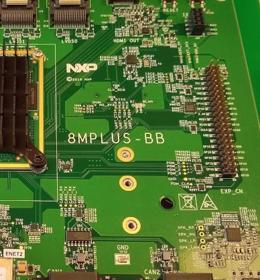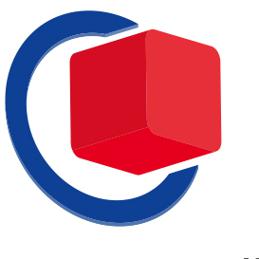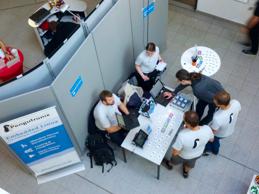If you are following the Linux graphics development it should be no news
to you that MESA 17.2 and Weston 3.0 have been released in the last
weeks. While those carry the usual improvements and bugfixes for a lot
of graphics hardware, they are a pretty important milestone for the
Etnaviv project: we finally have fully working Wayland support!
While Etnaviv, being just another hardware driver within MESA, inherited
all common support code like GBM and the Wayland EGL platform, which got
the compositor side working right with the initial merge, Wayland
applications haven't worked correctly up until now. While they
technically did work already, they were unusable as the window content
was only a scrambled mess. The reason for this is the tiled memory
layout the GPU is using for texturing and rendering. This article Gives
a nice in-depth explanation for those interested in the details.
That's actually a very common thing in 3D rendering with all modern GPUs
using this technique. So why didn't things work with Etnaviv? The "old"
protocols for sharing graphics buffers between application and
compositor/server, like DRI2 and wl_drm, did not include any way to
include buffer metadata like the used tiling layout, so all the mature
DRM drivers like Radeon, Nouveau and Intel have a side-channel to share
this information between different processes. Those drivers are
attaching the buffer metadata to the kernel side graphics buffers, which
works well as long as the userspace side and kernel buffers have a
direct 1:1 relationship. Modern graphics uses like Vulkan increasingly
move in a direction where a kernel side buffers are sub-divided into
several userspace buffers. As this means a single kernel buffer can
carry buffers with differing buffer metadata the side-channel starts to
breaks down.
As attaching the buffer metadata to the kernel side buffers seems to
have limited value in a modern graphics stack and would increase the API
between the Etnaviv kernel and userspace driver (which we would have to
support until the end of time due to the Linux kernel no regressions
rule), we decided against adding such a kernel-based solution for
Etnaviv. Instead we decided to piggy-back on the efforts undertaken by
Intel and Collabora to allow sharing the tiling information entirely in
userspace. This is done through so called "modifiers", which are
basically just 64bit enum values. The registry for the available
modifiers is located in the kernel, which makes it possible to use them
not only in the 3D stack, but also on the display side. Ben Widawsky
talked about how this used for end-to-end compression in the Intel graphics stack at XDC
a few days ago.
So what changed with Weston 3.0 and MESA 17.2?
Weston now implements the zwp_linux_dmabuf protocol in addition to the
wl_drm protocol. This allows to share buffers between the Wayland
application and the compositor using standard dma-buf file descriptors
and push all sorts of metadata describing the buffer content over the
Wayland protocol.
MESA uses this protocol when available to implement the buffer sharing
in the Wayland EGL platform.
Most of the work to enable this in Weston and MESA common code was done
by Collabora's Daniel Stone. Varad Gautam (also at Collabora) added
support for the modifiers at the Gallium interface level. As part of my
job at Pengutronix I helped to review the Gallium changes and added all
the necessary bits to the Etnaviv driver, which makes Etnaviv the first
Gallium driver to support the new way of sharing buffer metadata over
the Wayland protocol.
So those changes combined provide a fully working Wayland stack on the
platforms supported by the Etnaviv driver. And the best thing about
that? All the driver level support is being used unchanged to enable the
Android graphics stack on top of Etnaviv.
Texts and photos are licensed under CC-BY-SA, except explicitly stated otherwise




